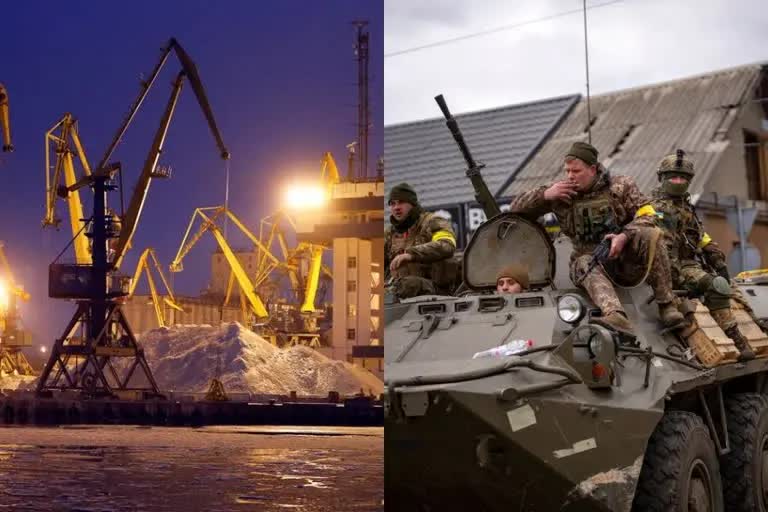New Delhi: The Russia-Ukraine war entered the fourteenth day on Wednesday which may have a serious impact on the subsidy bill of the Union government for the current financial year and the next financial year on account of a sharp increase in the crude oil prices and the price of input material for fertilizers and urea. The Centre’s subsidy bill has already gone up by 30% in the first 10 months of the current financial year in comparison with the subsidy bill during the same period of last fiscal.
Subsidy bill already up by 30% y-o-y
According to the latest official data, the Centre’s subsidy bill on account of four major subsidies, food, urea, fertilizer and petroleum subsidies, in the first ten months of this fiscal has gone up to over Rs 3.27 lakh crore in comparison with the subsidy bill of nearly Rs 2.53 lakh crore during the same period of last fiscal, an increase of over Rs 75,000 crore or nearly 30 per cent.
In the revised estimate for the current financial year, the Finance Minister estimated the Centre’s subsidy bill to be over Rs 4.33 lakh crore.
In the first ten months of FY 2021-22, food subsidy accounted for the biggest chunk with over Rs 2.09 lakh crore, followed by nutrient-based fertilizer subsidy (Rs 43,671 crore), urea subsidy (Rs 72,749 crore) and petroleum subsidy at Rs 1,408 crore.
Finance Minister Sitharaman estimated the petroleum subsidy bill for the year at around Rs 6,513 crore as petrol and diesel prices are technically unregulated and oil marketing companies are free to revise the prices as per the market conditions in the international market.
Budget estimated crude price to be $75-80 per barrel
However, the budget for the next year has been based on the assumption that the price of Indian basket of crude oil, the Brent crude, will be in the range of $75-80 per barrel for the next financial year (April-March 2023 period).
In contrast to the government’s estimate, the price of Brent crude has already touched $130 a barrel on Tuesday and is expected to touch $150 a barrel in near future, nearly double the price of the estimates used in the budget calculations.
The Russian authorities have even warned of the situation that the crude prices may touch $300 a barrel as result of the sanctions imposed by the Western countries on Russia.
Impact on food, fertiliser and urea subsidies
According to some economists, the Russia-Ukraine war will result in the increased subsidy allocation as higher food, Nitrogen, Phosphorus, and Potassium (NPK) fertilisers and oil prices are likely to put pressure on the Centre’s subsidy allocation for fertilisers and LPG.
In February this year, Sitharaman estimated the total subsidy outgo for the current fiscal to be over Rs 4.33 lakh crore at a time when petroleum subsidy was estimated to be at around Rs 6,500 crores, a meagre amount by any yardstick.
However, with the start of the war late last month, the situation has changed drastically in just two weeks.
With the assembly elections getting over in the five states of Uttar Pradesh, Punjab, Uttarakhand, Goa, and Manipur, it is speculated that the state-owned oil marketing companies (OMCs) may revise the retail price of petrol and diesel any time.
It is not yet clear whether the Centre will pass on the entire burden on consumers or a part of it would be shared by the Centre and State by cutting the respective duties and taxes.
In any case, it is a tricky situation for the government. If the government decides to refrain from increasing the petroleum and fertilizer subsidies then it would impact the balance sheets of oil and fertilizer companies, impacting their credit ratings.



